Barbados Expands Weather Observation Network with 3D-PAWS
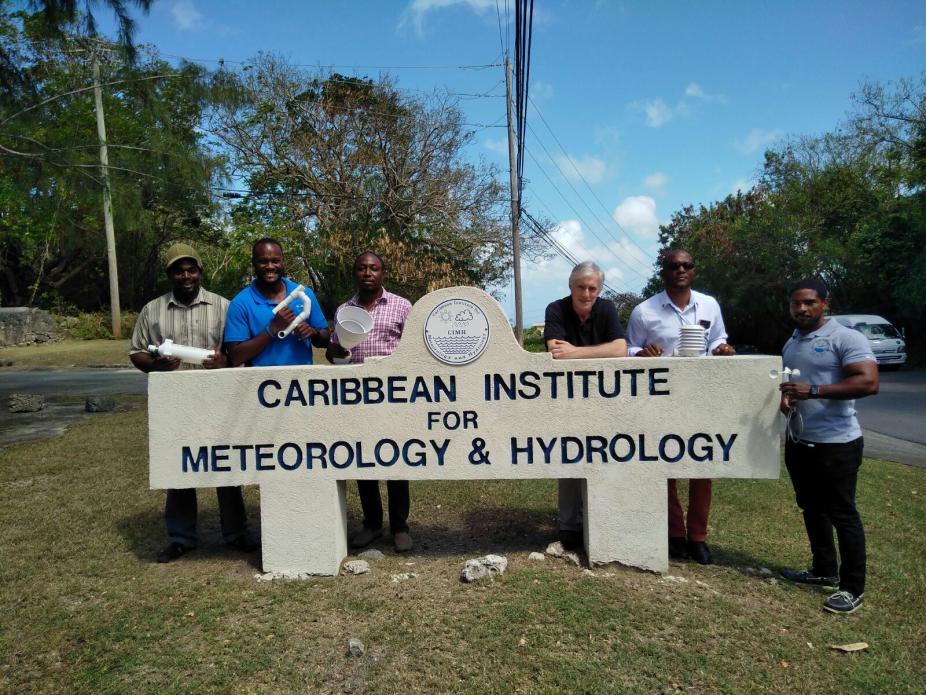
The COMET ICDP team at the first 3D-PAWS training for the Caribbean Institute for Meteorology & Hydrology in Barbados, March 2018.
Barbados, the easternmost island of the Lesser Antilles, is often subjected to hurricanes, tropical waves, and other impactful weather events. The Barbados Meteorological Service (BMS) successfully launched an initiative to expand the observation to improve the ability to monitor and provide early warning for hazardous weather conditions to its citizens.
Partners in Expanding Weather Observation
Before 2018, BMS had just two operational weather stations for the 166 square-mile (430 square-kilometer) island. Since that time, and through a partnership with the University Corporation for Atmospheric Research’s (UCAR) COMET ® International Capacity Development Program (ICDP) with support from USAID, the BMS has expanded their weather observation network to almost 100 stations. The majority of these new observation sites utilize the innovative, low-cost 3D-Printed Automatic Weather Station design, also known as 3D-PAWS.
About 3D-PAWS
The 3D-PAWS is a sustainable weather observation platform that measures temperature, pressure, humidity, wind speed and direction, rainfall, and incoming solar light. The components are fabricated using inexpensive, 3D-printed technology and commercial-off-the-shelf sensors. The stations use a low-cost single-board microcontroller, such as a Raspberry Pi or Arduino, to collect and transmit observation data via wireless, 3G, and even satellite communications. Data are stored locally on the microcontroller and are also transmitted to a cloud server and/or local data servers for post-processing and dissemination.
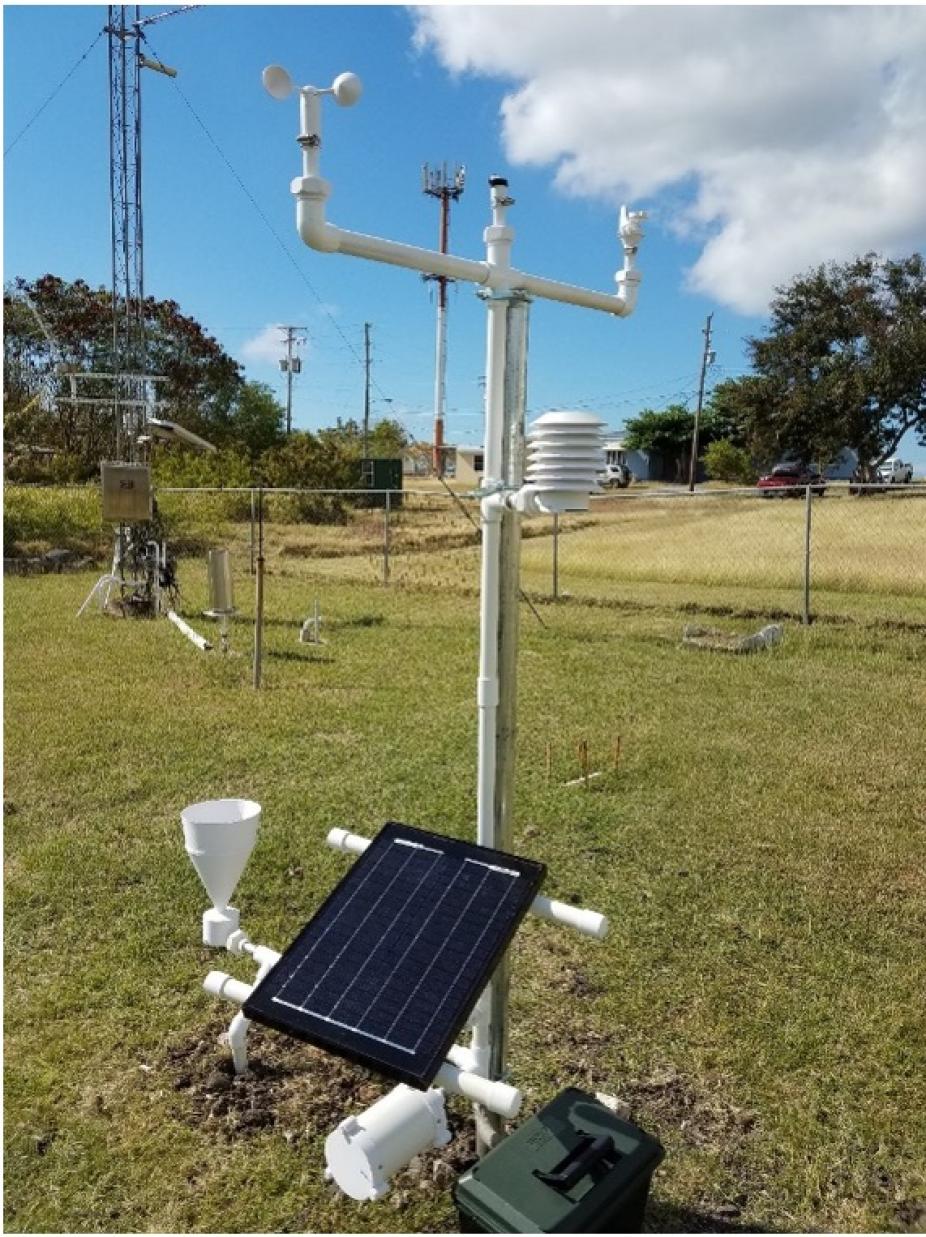
One of almost 100 3D-PAWS stations on the island of Barbados.
The 3D-PAWS program was initiated by COMET with USAID support in 2014, with a goal of expanding weather observation networks in data-sparse regions, especially in Small Island Developing States (SIDS) and Least-Developed Countries (LDCs). Because of the remote nature of most observation sites, a 3D-PAWS system typically uses a solar panel and battery for power. Additionally, if components of the weather station fail or are damaged, replacements can easily be reprinted and replaced to support the sustainability of the observation network. Since the project started, over 215 3D-PAWS have been deployed in 15 countries.
BMS Launches Their 3D-PAWS Initiative
The partnership between COMET and BMS began after BMS personnel attended a training session on 3D-PAWS held at the Caribbean Institute for Meteorology and Hydrology.
The COMET team provides hands-on training workshops for National Meteorological and Hydrological Services (NMHS) like the BMS to fabricate and deploy a 3D-PAWS network and integrate the data into the existing observation networks. A typical training workshop lasts seven to ten days.
The current BMS Director, Sabu Best, was intrigued by the opportunity to expand the Barbados observational network and for the BMS to be able to maintain the network and incorporate the data into their forecasting processes. He established an internal goal to create a dense network of 100 3D-PAWS for the island. After the initial training workshop, the BMS received their own 3D-printers courtesy of COMET and USAID and assumed local ownership of the 3D-PAWS program. The BMS network has expanded to 65 3D-PAWS with real-time data displaying on the BMS’s Zamasu dashboard and can be seen by the BMS, local citizens, and neighboring islands.
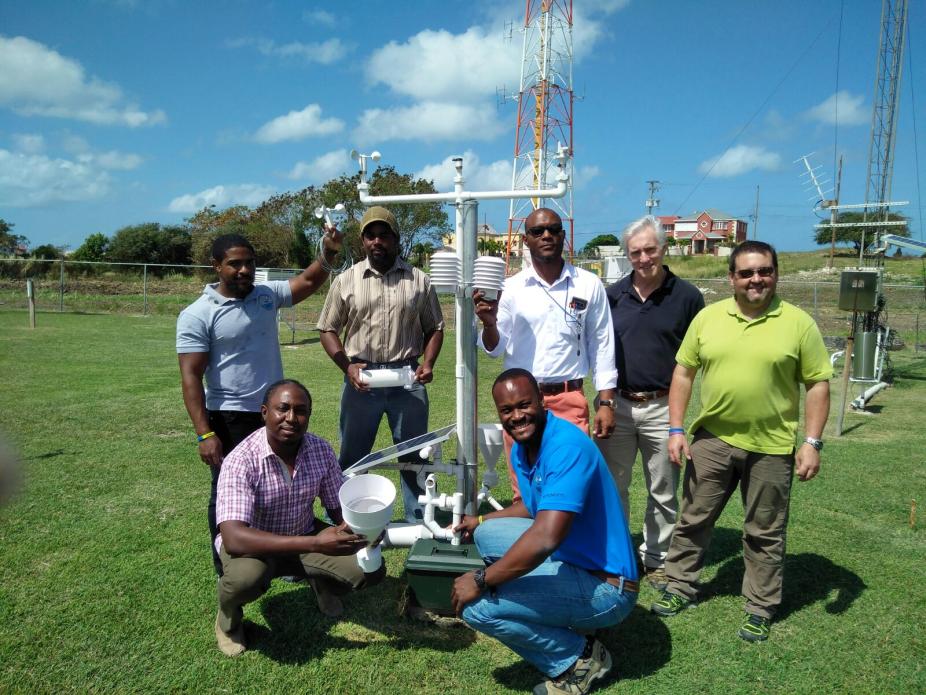
Members of the Barbados Met Service and ICDP team posing with a 3D-PAWS unit on the island.
While tropical cyclones can have a high-impact in Barbados, any weather system producing heavy rainfall can cause flooding in prone areas. According to Brian Murrary, Deputy Director at the BMS, monitoring the 3D-PAWS dashboard is especially useful for providing early warning for flooding. The dashboard helps forecasters see when and where rainfall accumulations are quickly increasing.
Case Study: Demonstrated Benefit of the 3D-PAWS Network
A severe mesocyclone that impacted Barbados in June of 2021 demonstrated the benefits of the 3D-PAWS network. The BMS was able to track the mesocyclone position due to surface wind observations and pressure drops from 3D-PAWS stations across the island. A 3D-PAWS rain gauge showed extreme rainfall rates as high as 250 mm/h. This rain rate seemed unbelievable to forecasters at first, but was confirmed by neighboring 3D-PAWS. Confirming the intensity of the rainfall rates helped the BMS produce a more accurate flood forecast for the event.
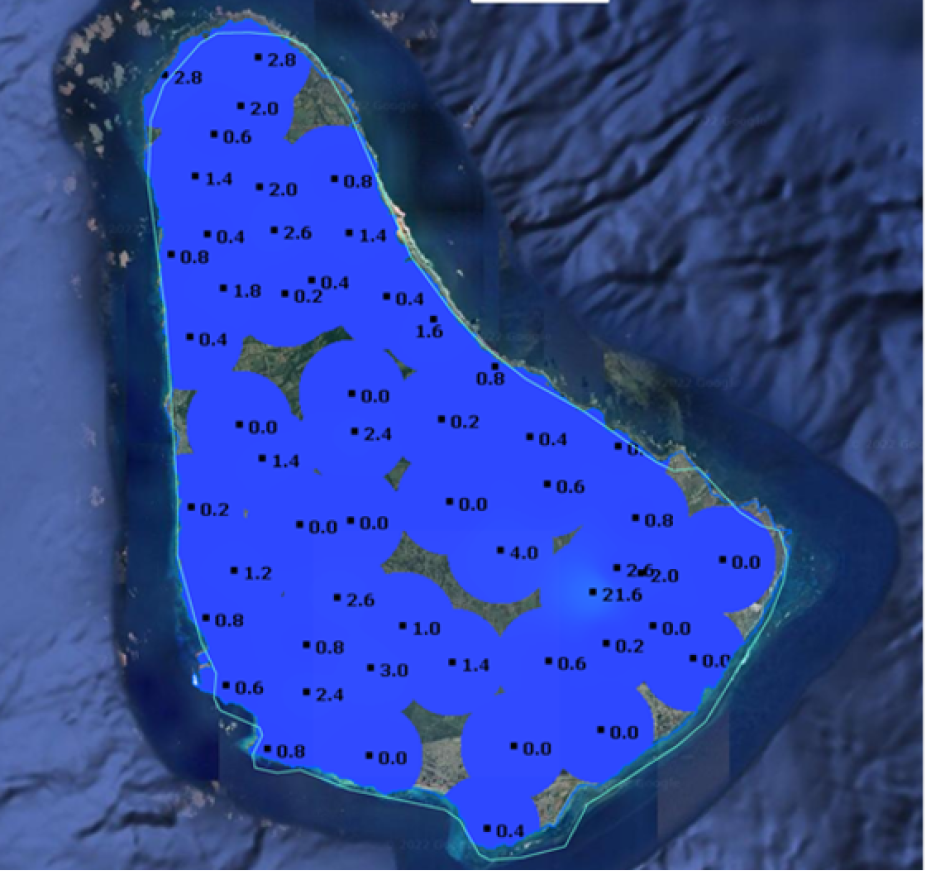
3D-PAWS Rainfall Observations from the BMS’s Zamasu platform.
Helping First Responders
Just a few weeks later, on July 2, BMS forecasters were able to monitor increasing winds on the island from Hurricane Elsa, the first hurricane of the 2021 season. Elsa reached hurricane strength as the eye passed just south of Barbados. The northern eyewall impacted the southern portion of the island, causing structural damage, but no loss of life. According to Mr. Best, the peak wind observations from the 3D-PAWS helped the BMS quickly direct first responders to the areas that sustained the most damage.
A Strong Partnership
Both COMET and the BMS continue to benefit from the partnership. While the COMET team continues to share technical expertise, the BMS has been instrumental in field testing updated 3D-PAWS designs that can be applied in other countries. Additionally, several BMS personnel have become subject matter experts in the 3D-PAWS fabrication process. In July 2022, BMS meteorologist and technical expert Andre Brathwaite assisted the COMET team in conducting 3D-PAWS training with Trinidad and Tobago Met Service.
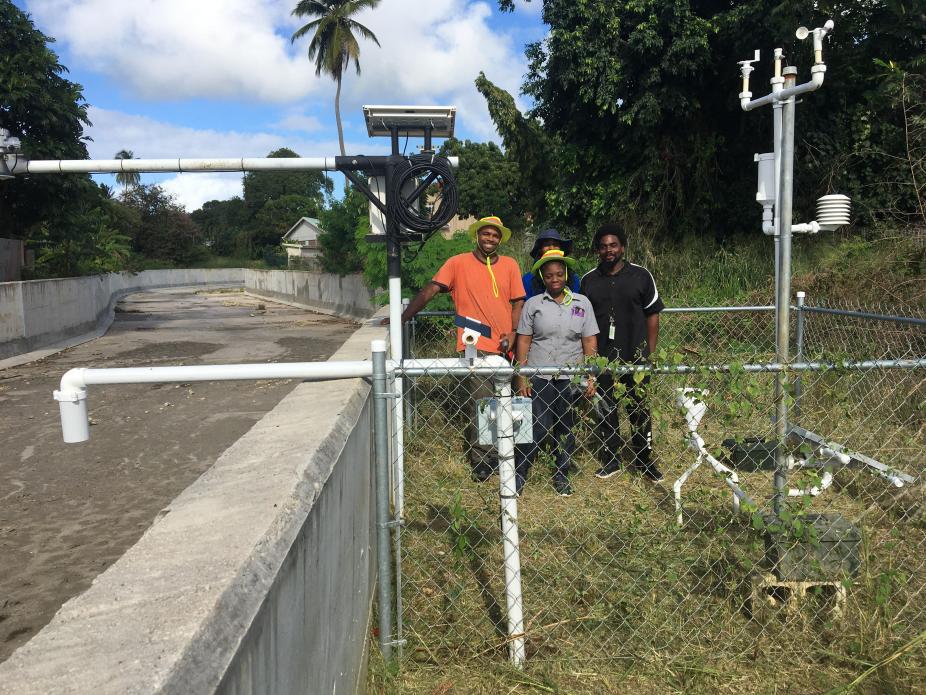
A 3D-PAWS stream gauge sensor at the Speightstown stormwater canal in Barbados next to the standard 3D-PAWS.
The BMS also supports COMET by evaluating and testing newly developed 3D-PAWS sensors. Recently, a stream gauge sensor, a low-cost, ultrasonic distance-to-surface sensor to measure water level was deployed in Barbados. COMET assisted the BMS with the installation of a stream gauge at the Speightstown stormwater canal in January 2023. COMET plans to integrate the 3D-PAWS stream gauge into a Multi-Hazard Early Warning System that supports the World Meteorological Organization’s (WMO) Early Warning for All initiative that could help Met Services provide warnings not only for wind and heavy precipitation but also for rising stream heights and storm surge.
The 3D-PAWS network is a source of great pride for Mr. Best and the BMS, and they hope to serve as an ambassador for the program, demonstrating the benefits to other NMHSs. COMET, with the support of USAID, also hopes to continue to help Met Services from SIDS and LDCs expand their observation networks. A project with the Dominican Republic installing 3D-PAWS weather, stream gauge, and storm surge sensors is planned for May 2023. The success of the BMS 3D-PAWS network is an outstanding example of how long-standing partnerships can enhance early warning capability.